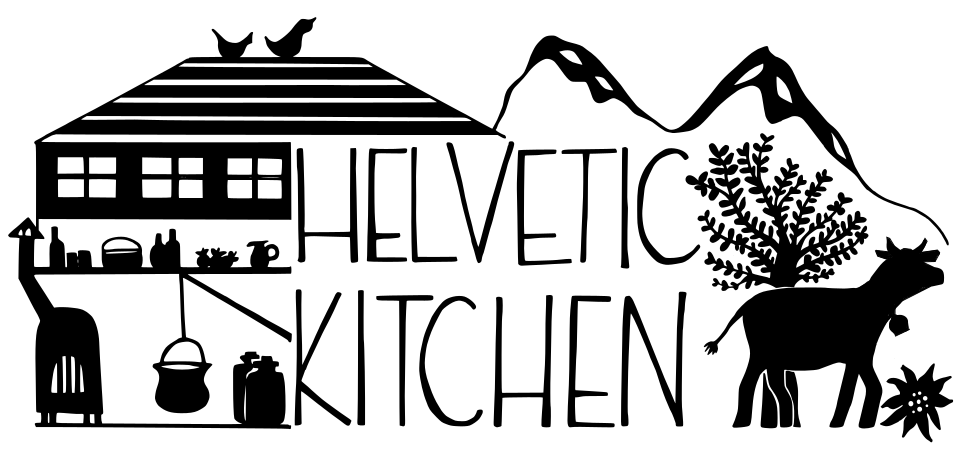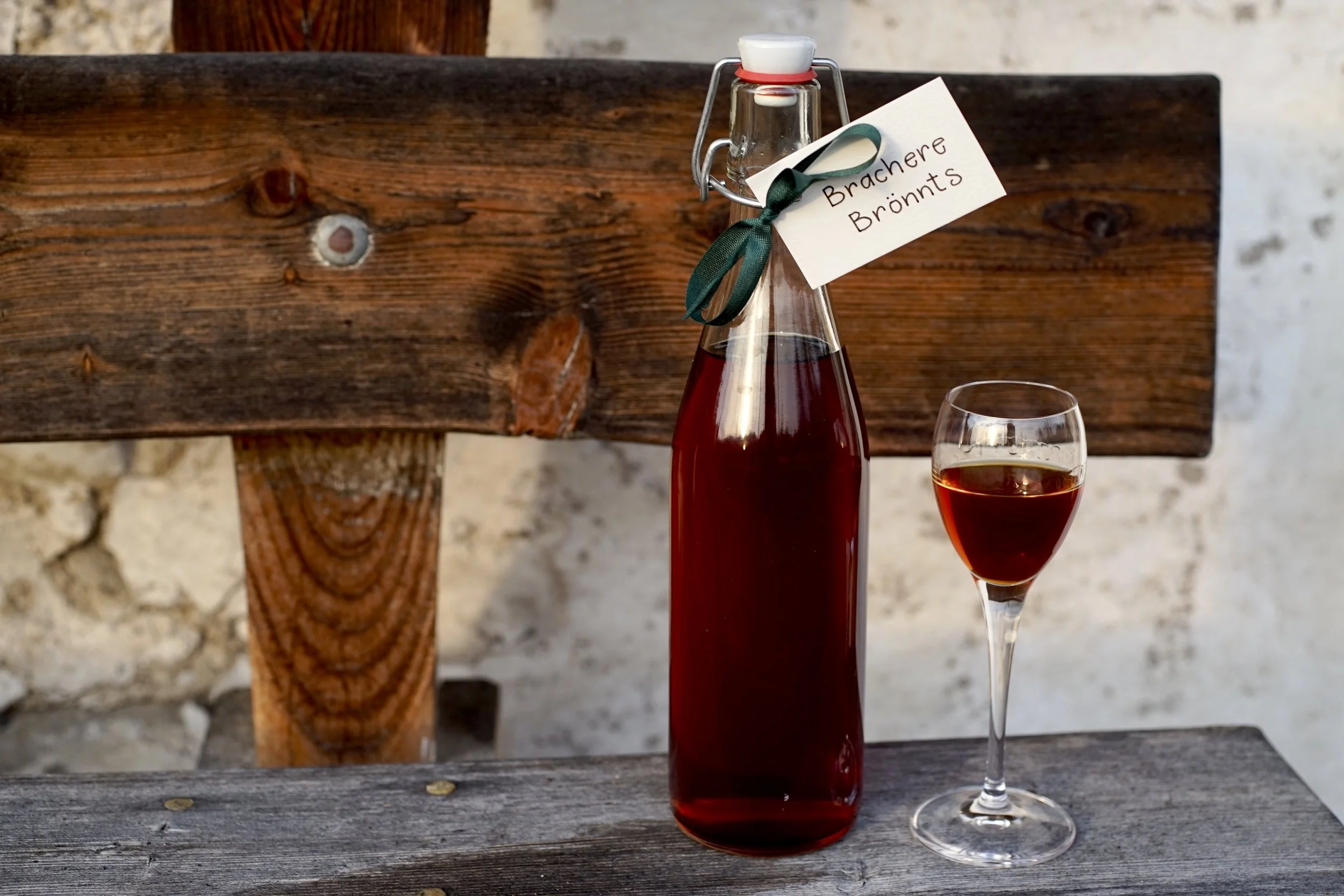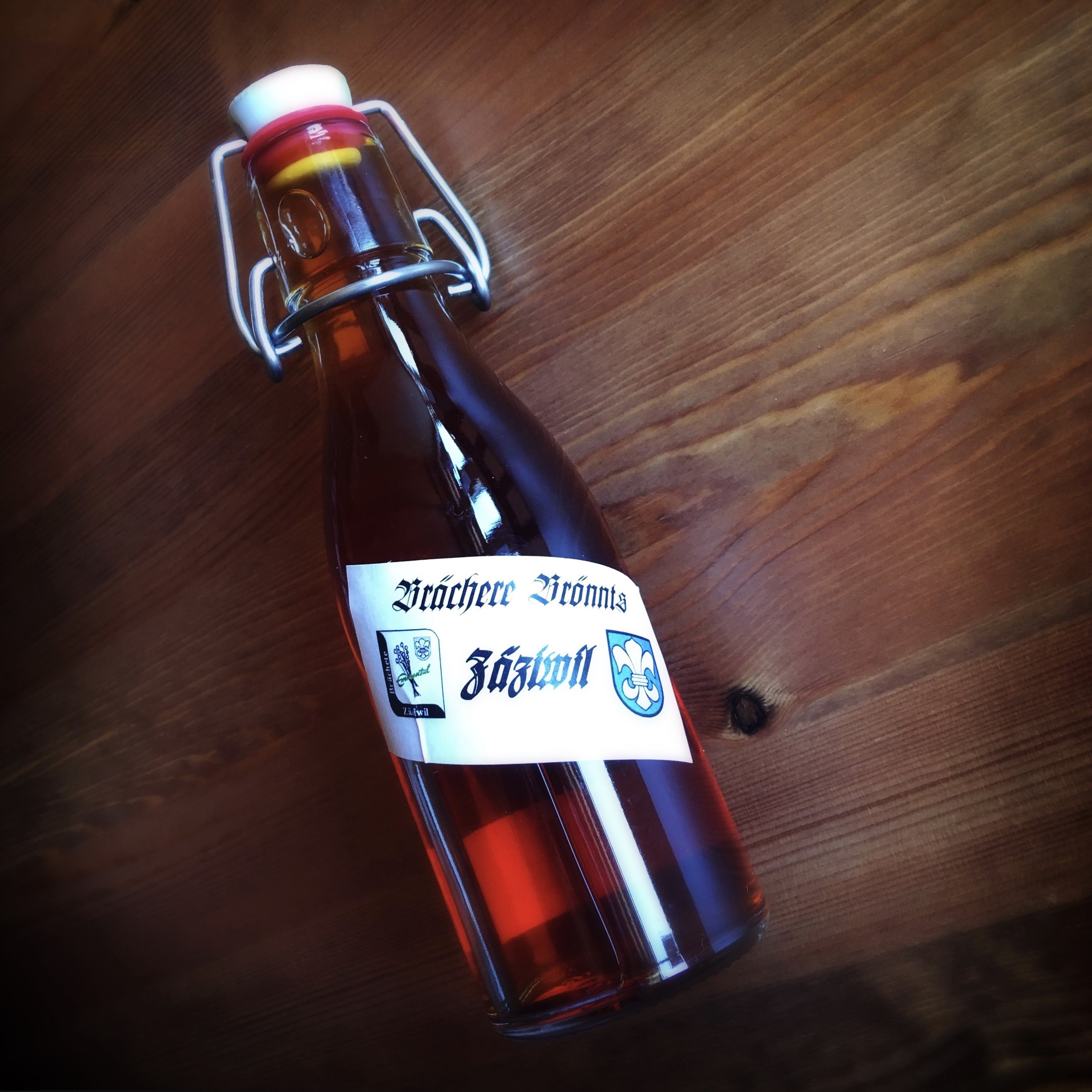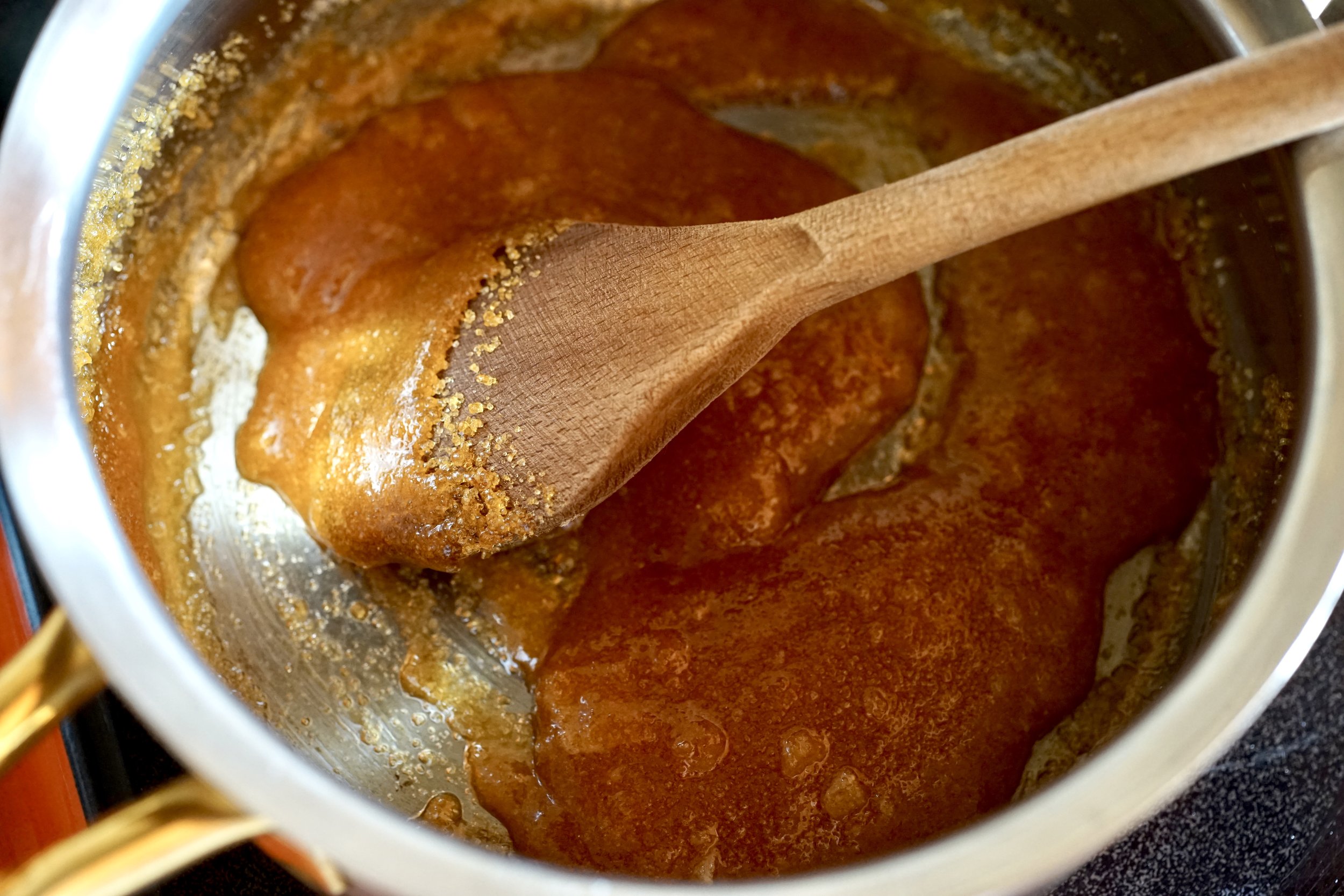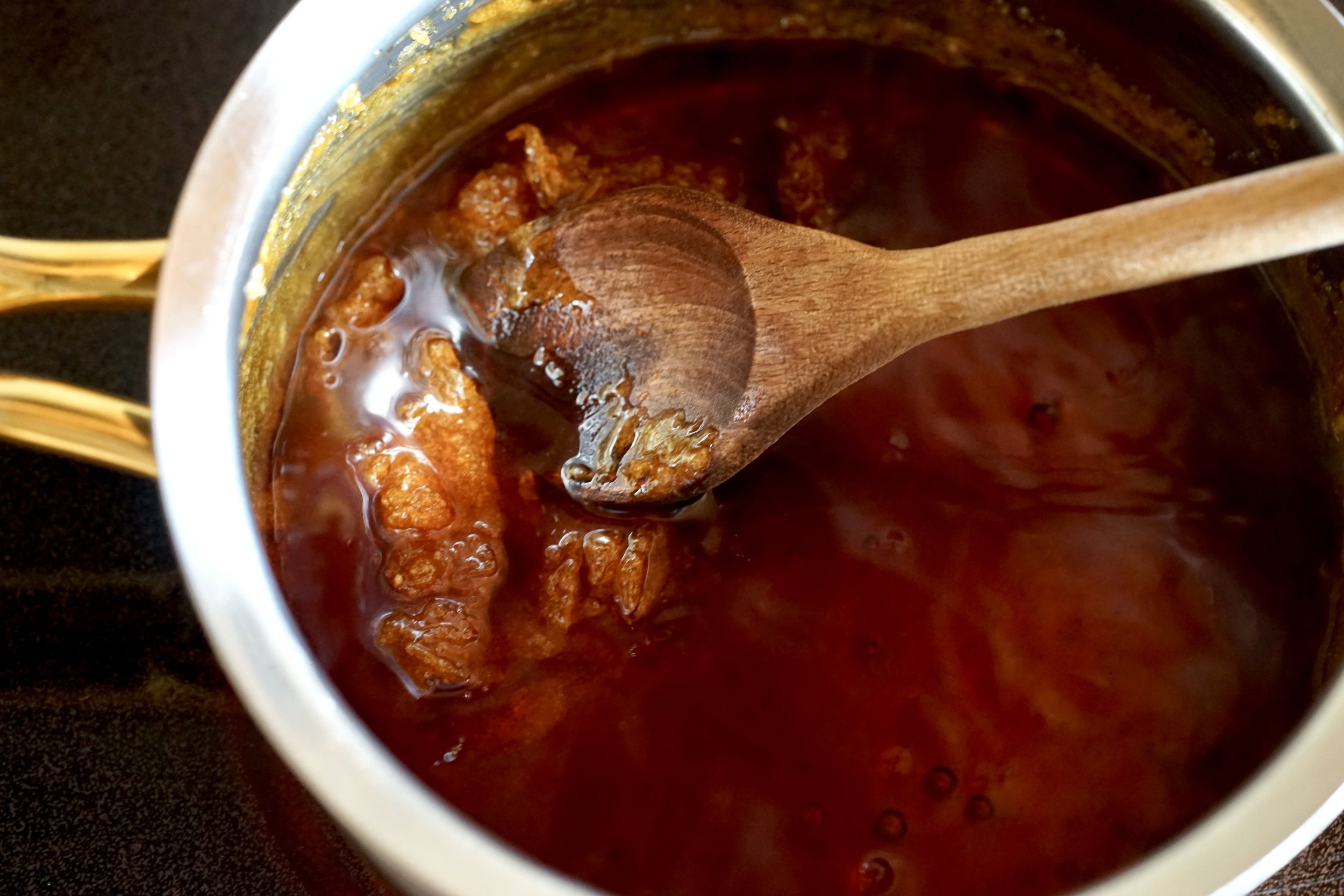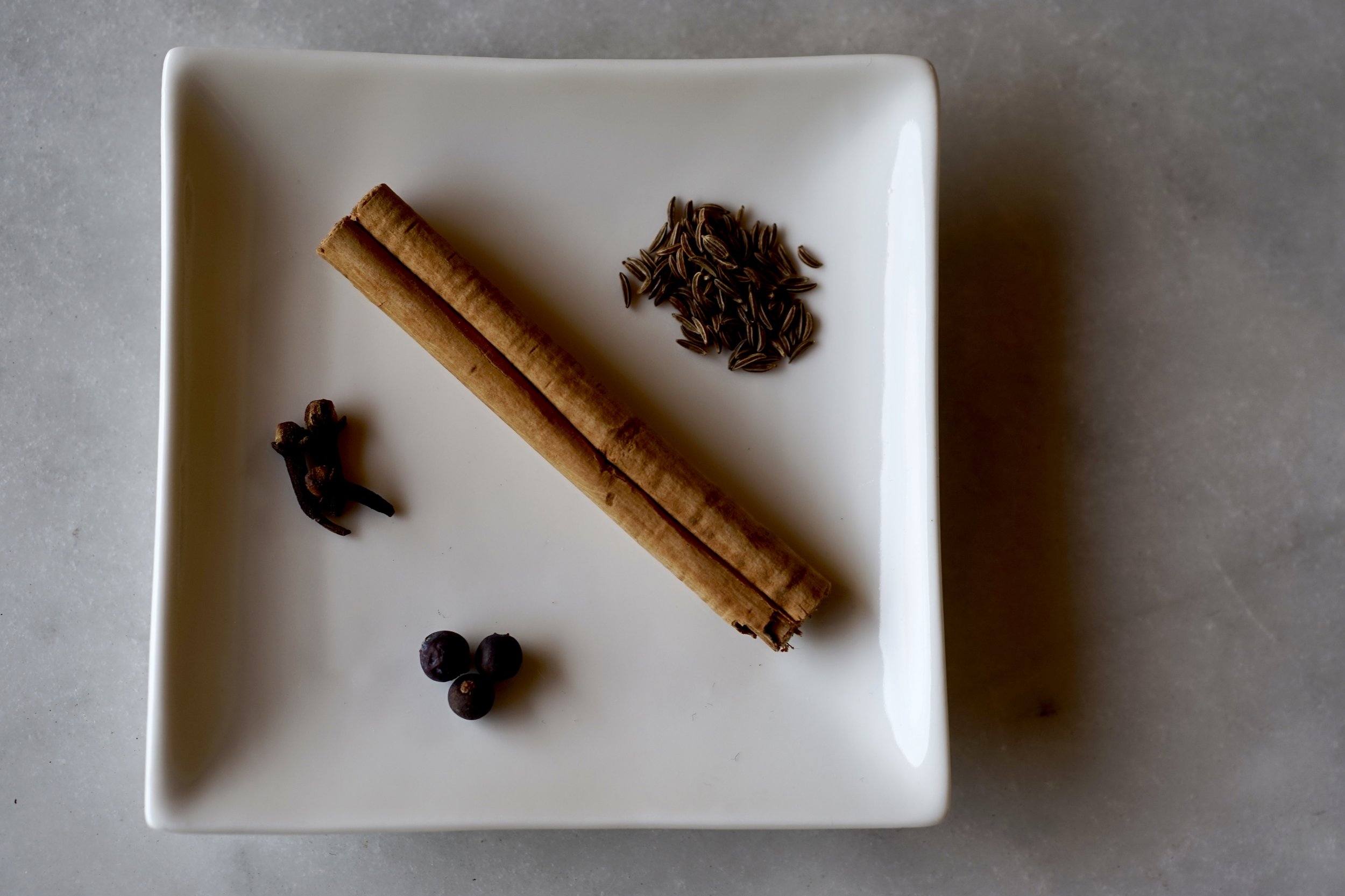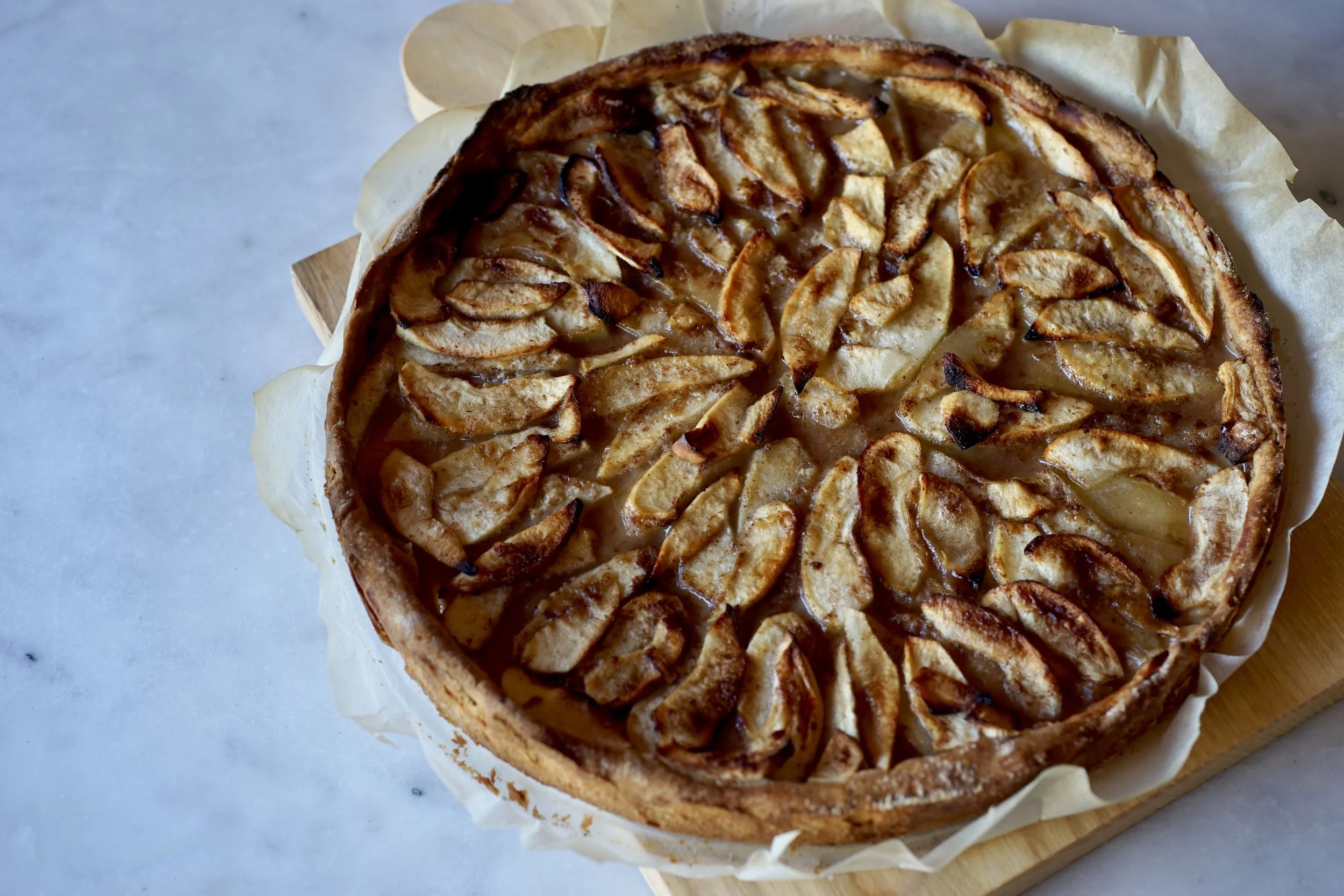Brächere Brönnts
A few weeks ago, I attended the Brächete in Zäziwil, a flax-breaking festival held the last Wednesday of every September.
Sure, linen is interesting, but I had a specific motive—to try authentic Brächere Brönnts. This caramel spirit was a way for the flax-breakers to revive themselves and celebrate after a highly laborious and productive day of work.
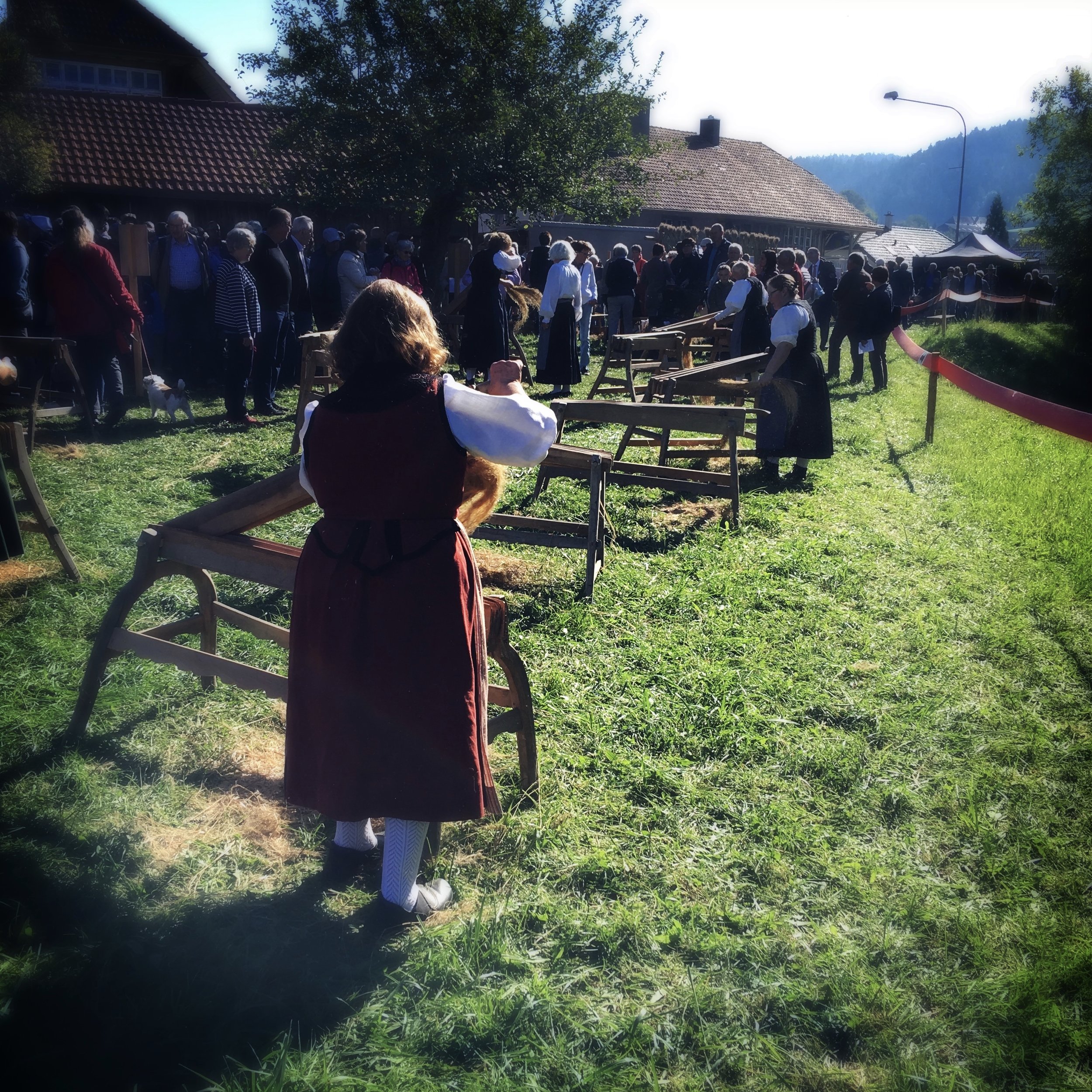
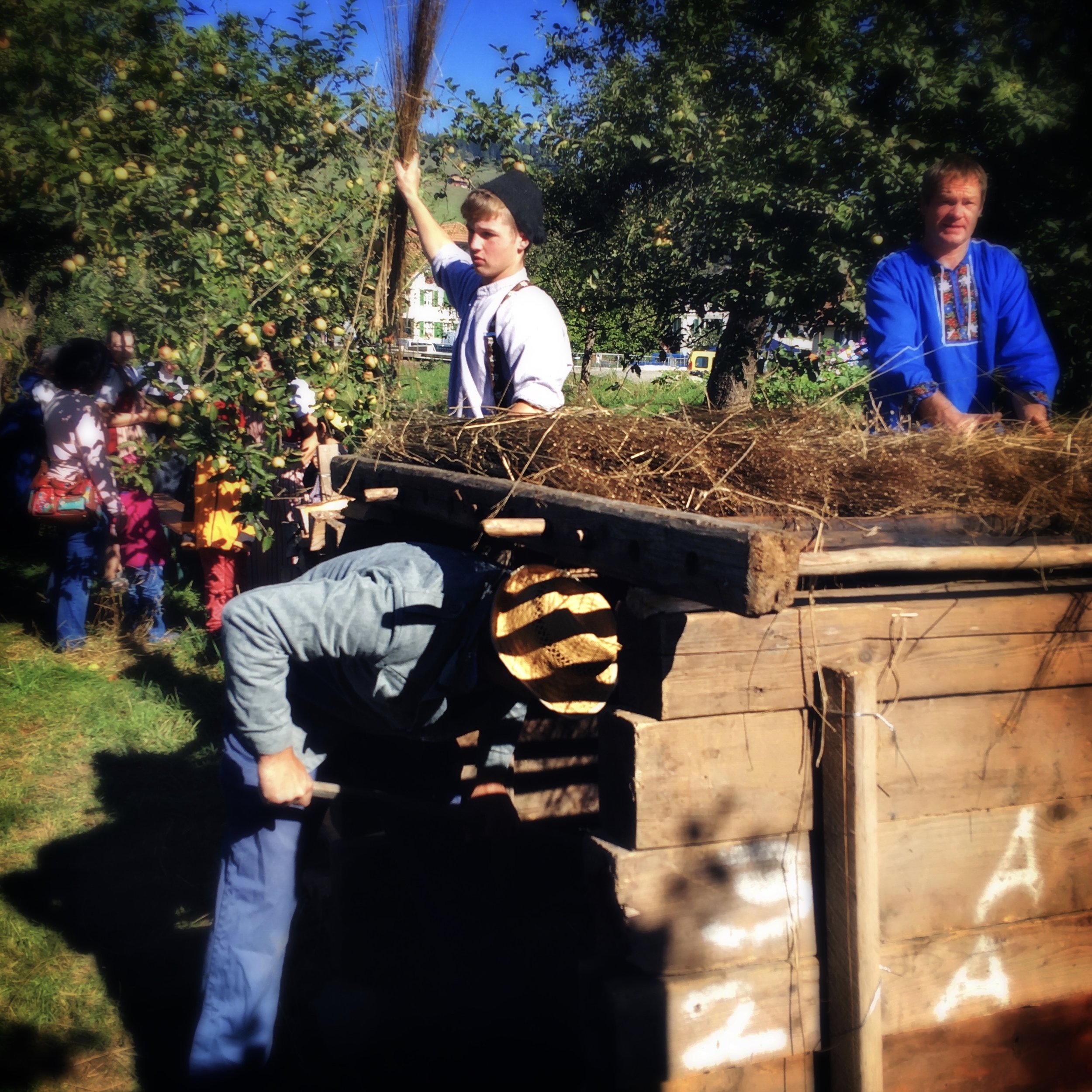
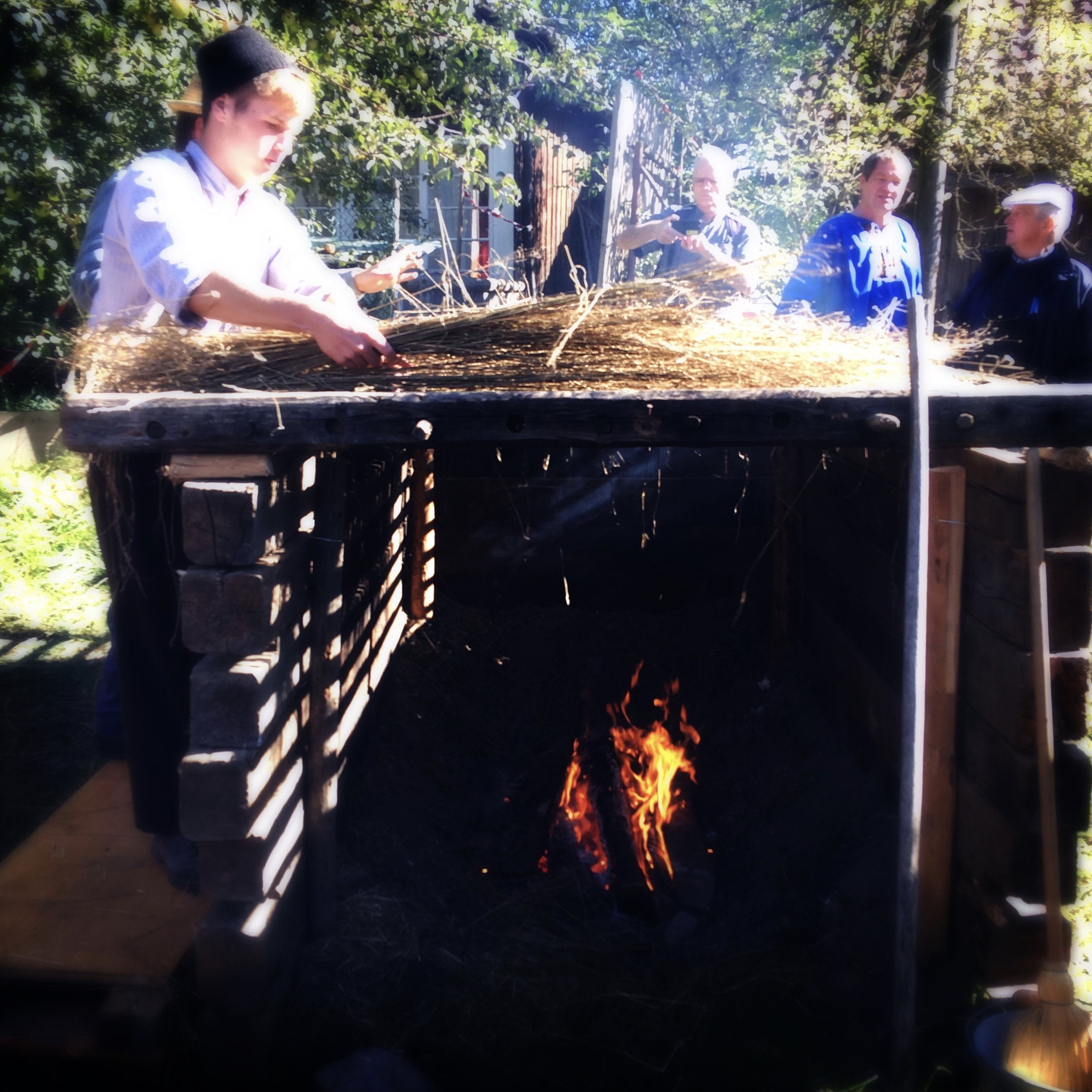
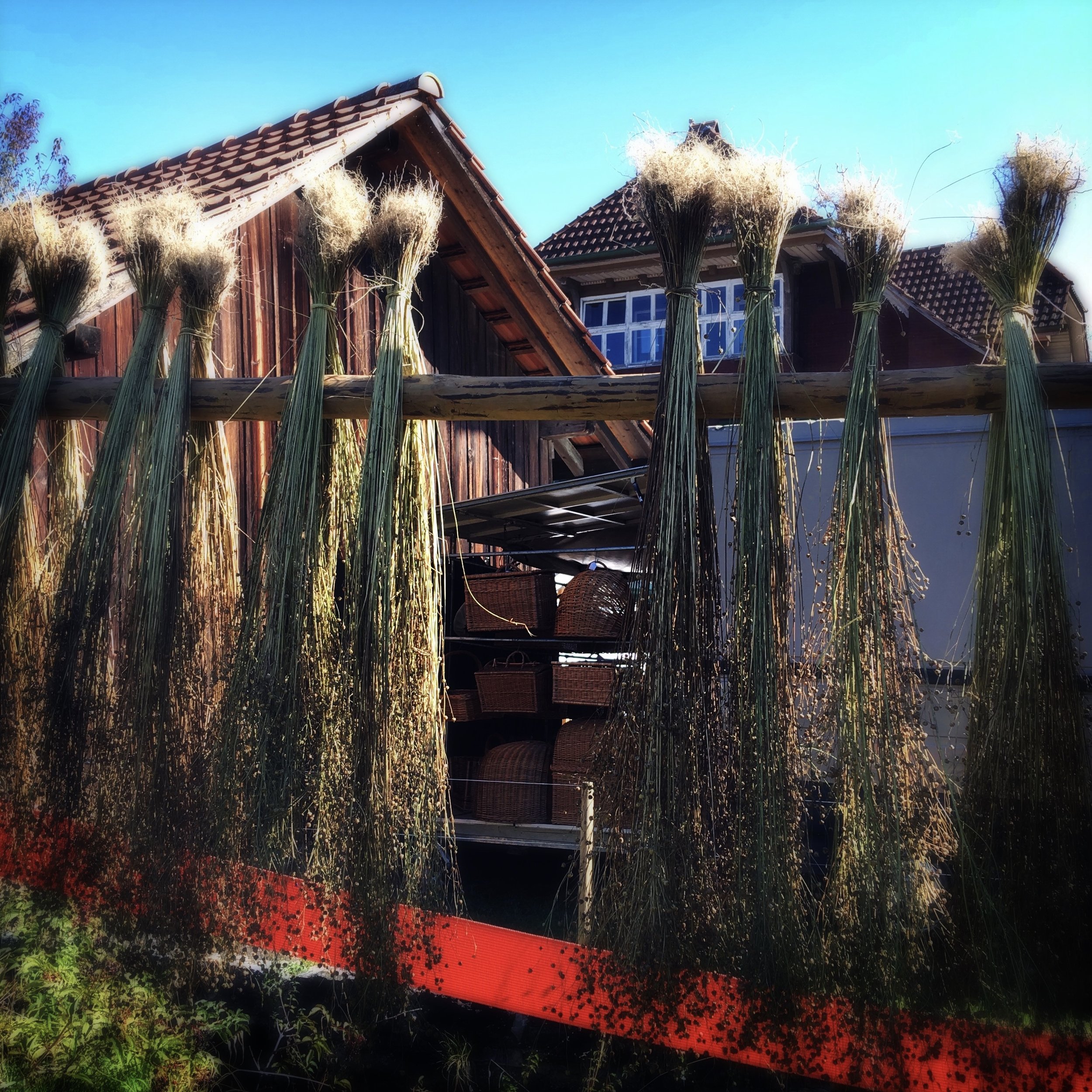
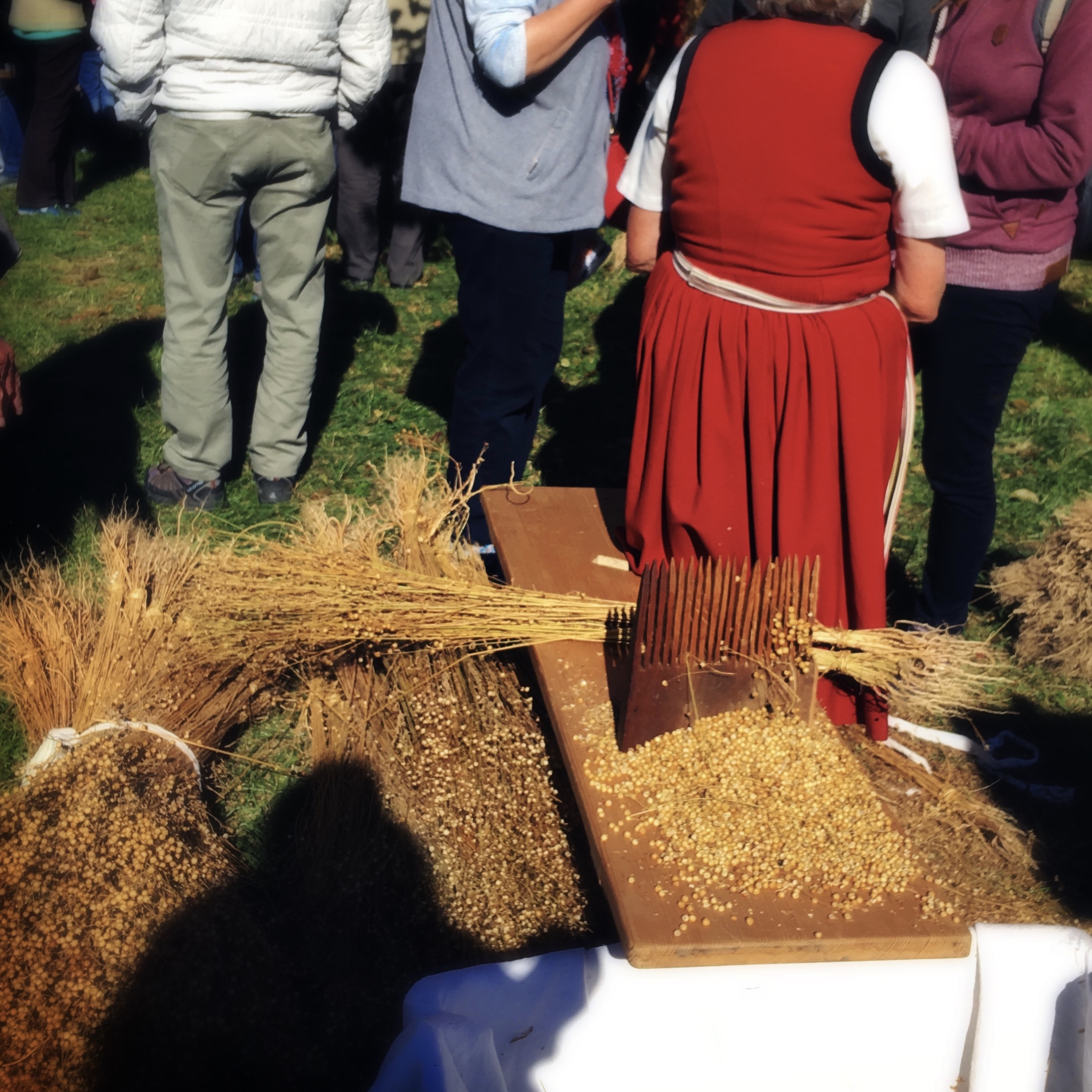
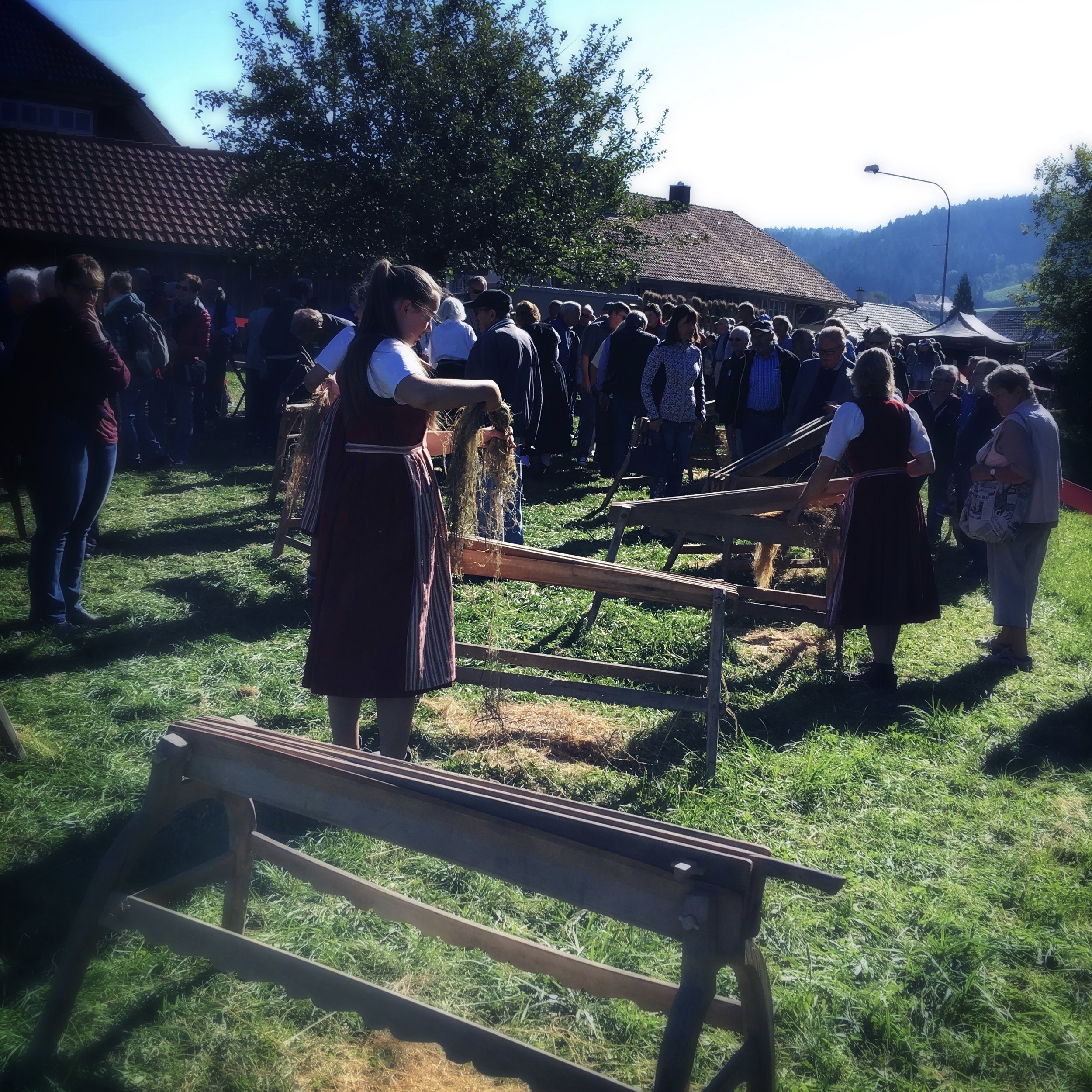
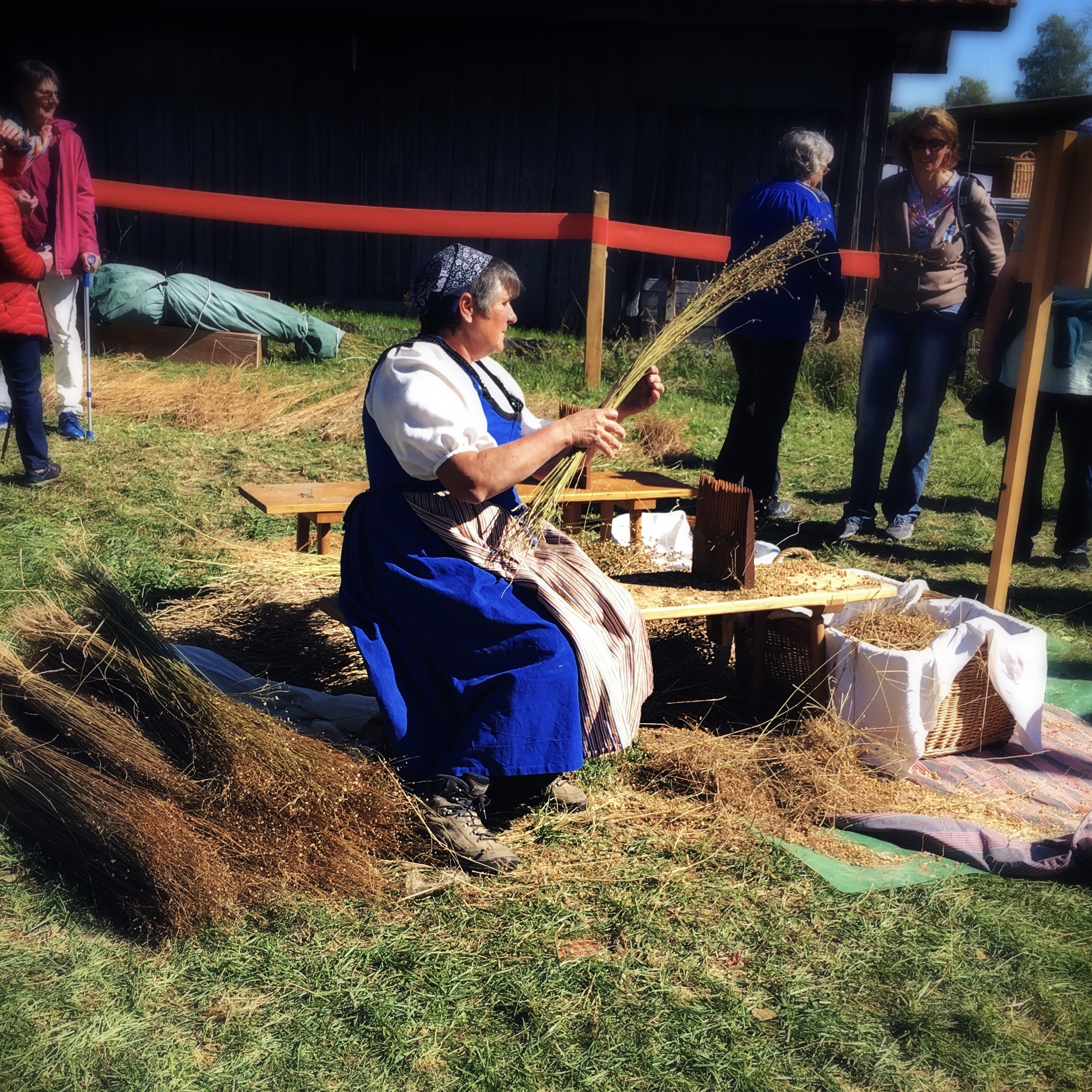

The Brächete
Traditionally, Swiss farm families made linen by hand, by processing flax. The breaking, or Brächete as it was called, was a day-long event in villages throughout the Emmental and elsewhere.
Using large wooden implements, the flax would be combed, roasted, rolled through a large wooden crushing machine, pounded by hand, combed again, rinsed, and spun into threads as fine as hair. Finally the threads could be woven into all manner of products, from tablecloths to Trachten (traditional Swiss dresses). No part of the flax went to waste and by-products were used for house and pipe insulation, as well as in sausage making. Here’s a video.
In Zäziwil, all parts of the flax breaking are represented by locals in traditional dress, who demonstrate each step, throughout the day.
All this hard work demanded a proper reward, and that came via the Brächere Brönnts. As dusk fell, the exhausted flax breakers would imbibe the rejuvenating liquid, play their accordions, and dance into the night. Love also blossomed, as the villagers waited to see what young man carried home which young lady’s spinning wheel.
I didn’t stay in Zäziwil long enough to see this part of the festival, but I like to think that love blossomed anyway. And although I didn’t do any of the hard labour, I felt like after negotiating the crowded streets and wrangling my toddler I, too, deserved not one, but two shots of the Brönnts—one sold by a distiller from Wynigen and the other by a community organization in Zäziwil.
Brächere Brönnts is typically only available at the market, or perhaps in very local establishments. So if you want to taste this delicious amber, caramel spirit, making your own is a must (and the finished product serves as a fantastic treat after a difficult (or easy) day of work).
The hardest part is making the caramel, which is tricky as it can go from golden to burnt in a matter of seconds. But with a careful eye on the colour and heat, it is definitely manageable.
There are many historical recipes for Brächere Bronnts, including a version from Grande Dame Marianne Kaltenbach and from Emmental food chronicler Fritz Gfeller. A deeper history can also be found at the Kulinarisches Erbe.
Some versions add red wine, but I like an unadulterated caramel taste. I’m pretty sure that both versions I tasted at the market omitted the wine as well.
Enjoy your Brächere Brönnts straight, or stir it into cinnamon tea.
150 g sugar
200 ml water
3 cloves
3 juniper berries
1 tsp caraway seeds
a cinnamon stick
400 ml kirsch
Measure your sugar into a large pot—you want an even layer over the bottom. Have your 200 ml of water measured out and ready, next to the stove.
Over high heat, begin to caramelize the sugar. Keep swirling the pan, and when the bottom layer liquefies, or starts to smoke at the sides, use a wooden spoon to stir it all together. If you have the feeling that it is too hot, or that the colour is changing too quickly, pull it off the heat and keep stirring.
Keep stirring as all the sugar liquefies and turns golden.
As soon as it starts to turn amber, add the water. This will stop the caramel from cooking and darkening further, but BEWARE it will splutter and the caramel will seize up.
Put the pot back over medium high heat and cook until all the sugar dissolves in the water. Keep stirring it gently, this might take a few minutes.
cloves, cinnamon, juniper berries, caraway seeds
Add the cloves, juniper berries, caraway seeds, and cinnamon stick, and let sit for about 15 minutes.
Fill a large measuring cup with the kirsch. Strain the caramel into the cup and stir.
Funnel into a clean bottle.
Makes about 500 ml.
Making caramel can be intimidating—we were often told in pastry school that it was one of the most dangerous parts of the job. Never leave it unattended on the stove—it often cooks faster than you think. Also, don’t feel like you need to keep it over the hottest heat, pull it off the burner if things are moving too quickly, it will all melt eventually.
I use affordable kirsch as my standard spirit in all infused booze making, but other spirits with low flavour (vodka) or something like Williams or Zwetschgen would also work well here.
Best practice is to use a freshly sterilized bottle and funnel—either straight out of the dishwasher, or briefly rinsed with boiling water.
With all the sugar and booze, this should keep indefinitely in your liquor cabinet.
More Swiss Booze?
Kafischnaps Shots

